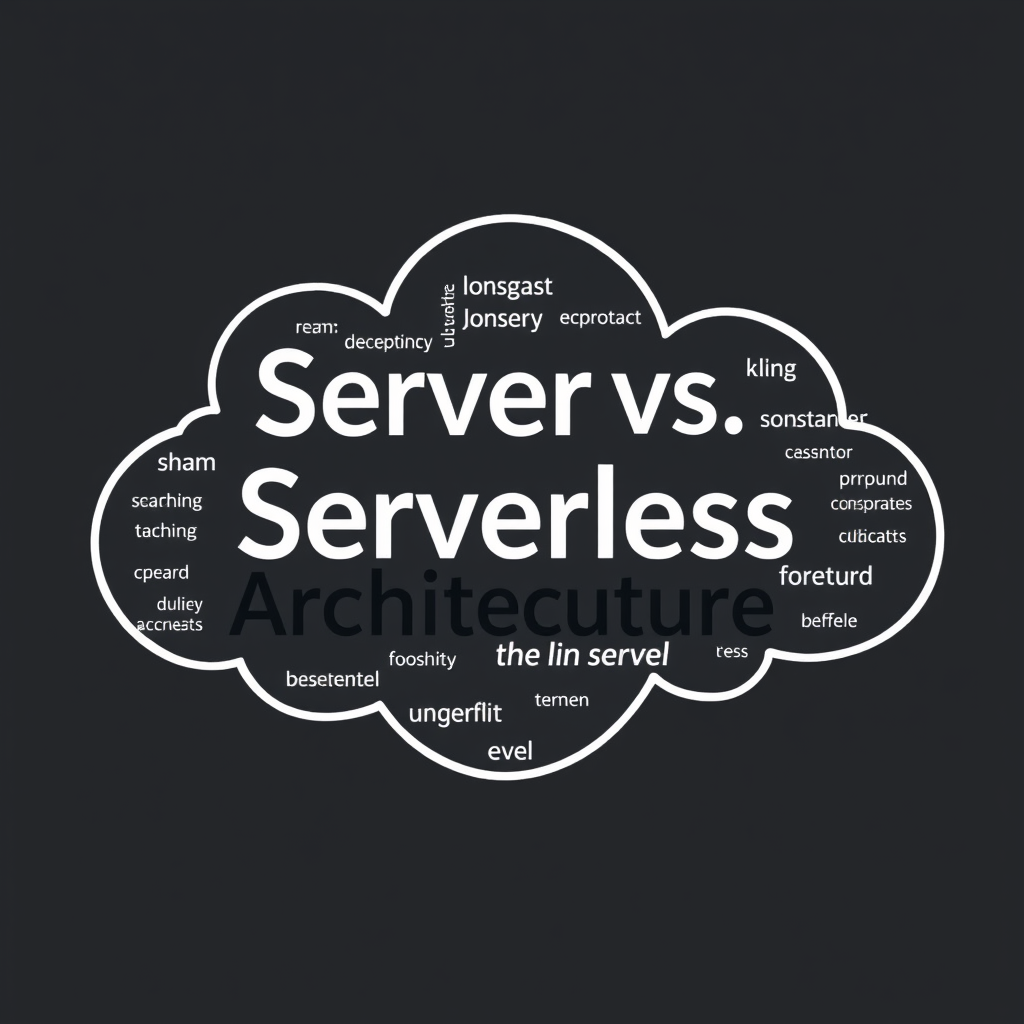Server vs Serverless Architecture
 GAURAV YADAV
GAURAV YADAV
There are two primary approaches to running applications in the cloud: traditional servers and serverless computing. With traditional servers, you manage the entire infrastructure, including hardware, scaling, and maintenance. In contrast, serverless computing allows you to focus solely on writing code, as the cloud provider manages the infrastructure and scaling automatically. Both options offer distinct advantages and trade-offs, such as cost, scalability, and complexity. This comparison will explore the benefits and limitations of each, helping you choose the best fit for your specific project requirements.
What is Server Architecture?
Server architecture refers to designing and arranging hardware, software, and networking elements within a server system. It includes the organization and configuration of these components to optimize resource management, enable seamless communication, and provide services to clients over a network.
This architecture involves decisions related to hardware selection, operating system deployment, networking infrastructure, server software setup, and virtualization or containerization techniques for efficient operation and scalability.
What is Serverless Architecture?
Serverless architecture, also called serverless computing or Function as a Service (FaaS), is a cloud computing model where the cloud provider manages server allocation and provisioning for running applications dynamically.
In this model, developers write code as discrete functions or small units, and the cloud provider manages the infrastructure needed to run them, triggered by specific events or actions. Serverless architectures offer automatic scalability, as the provider adjusts infrastructure to meet varying workloads. Functions run in parallel across multiple instances to handle traffic surges, and developers are charged only for the actual resources used during execution.
Differences Between Server and Serverless Architecture
| Aspect | Server Architecture | Serverless Architecture |
| Infrastructure Management | Developers manage underlying servers or VMs. | The cloud provider manages infrastructure (servers). |
| Resource Allocation | Resources provisioned based on anticipated workload. | Resources are dynamically allocated based on demand. |
| Scaling | Scaling typically involves manual or automated processes. | Automatic scaling based on workload fluctuations. |
| Cost Model | Costs include upfront investments and ongoing management. | Pay-per-use pricing model based on function invocations. |
| State Management | Applications maintain a state on the server side. | Serverless functions are stateless by design. |
Use Cases of Server Architecture
| Use Case | Description |
| Web Applications | Traditional web applications that require full control over the server environment, such as content management systems, e-commerce platforms, and enterprise software. |
| Database Management | Applications that require direct access to databases for data storage, retrieval, and manipulation, such as customer relationship management (CRM) systems and inventory management. |
| Real-time Communication | Applications that rely on persistent connections or real-time communication protocols, such as chat applications, multiplayer games, and video conferencing platforms. |
| High-performance Computing | Workloads that demand high computational power or specialized hardware, such as scientific simulations, financial modeling, and data analytics. |
| Legacy Systems Integration | Integrating with legacy systems or third-party APIs that are not compatible with serverless architectures or require custom infrastructure configurations. |
Use Cases of Serverless Architecture
| Use Case | Description |
| Event-driven Processing | Applications that respond to events or triggers, such as HTTP requests, database changes, file uploads, or scheduled tasks, with short-lived and stateless functions. |
| Asynchronous Task Execution | Background processing tasks, such as image or video processing, file conversion, data validation, or batch processing, that can be executed independently of user interactions. |
| Microservices Architecture | Decomposing monolithic applications into smaller, independently deployable services, each implemented as a serverless function, to enable scalability and agility. |
| IoT Data Processing | Processing and analyzing data streams from IoT devices, sensors, or edge devices, where workloads can vary unpredictably and scale dynamically based on demand. |
| Serverless APIs and Webhooks | Exposing APIs or webhooks for third-party integrations, webhooks, or serverless computing services, where functions are invoked in response to external events or requests. |
Subscribe to my newsletter
Read articles from GAURAV YADAV directly inside your inbox. Subscribe to the newsletter, and don't miss out.
Written by

GAURAV YADAV
GAURAV YADAV
Experienced Full Stack Developer with proficiency in comprehensive coding skills, adept at crafting end-to-end solutions.